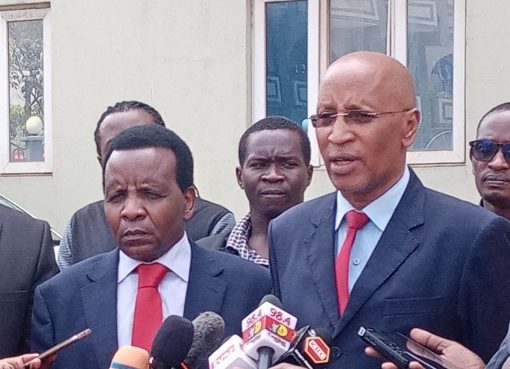Stakeholders in the child protection sector have called for concerted efforts in the fight against child labor and trafficking.
According to International Labour Organization (ILO) Project Manager Grace Banya, child labor and trafficking are still rampant in Kenya despite key interventions put in place by the government to curb the vice.
Banya revealed that poverty and cultural practices such as Female Genital Mutilation (FGM) are the main drivers of child labor and trafficking in Kenya.
“As a result of poverty, children are forced to work to supplement their families’ income. Cultural practices such as FGM also put the children at risk as the girls are married off after being cut and expected to do adult work.” She said.
Speaking during a Child protection stakeholder’s forum in Namanga, Banya noted that the most common cases of child labor in Kenya include: domestic work, street hawking, sand harvesting, herding, sexual exploitation, farm work, and children working in the boda boda sector.
In Kajiado County, the most common cases of child labor include herding, sand harvesting, domestic work, and harmful cultural practices such as Female Genital Mutilation and child marriages.
Child trafficking is also on the rise with children being trafficked through the porous Kenya- Tanzania border to undergo FGM and to be employed as domestic workers.
The National Council on Children’s Services (NCCS) estimates that around 17,500 Kenyans are trafficked annually for domestic work, forced labor, and commercial sexual exploitation, of which 50% are likely to be minors.
“Kenya is a source, transit, and destination country for trafficking in persons. Children and even adults are being trafficked from Kenya to Tanzania and from Tanzania to Kenya to work in farms, do domestic work, herd cattle, and for commercial sex exploitation.” Banya added.
She emphasized the need to strengthen advocacy campaigns as well as heighten awareness to ensure all children are protected.
Banya reiterated that enactment and enforcement of child protection laws in the country will also contribute to putting an end to child labor and trafficking.
Andrew Odete, ILO Engagement and Partnerships Officer, revealed that the International Labor Organization is supporting counties to enrich their child protection laws, policy agendas, and sensitization programs and to upscale rescue missions for victims of child labor and sexual exploitation through the County Child Advisory Committees.
Odete added that the ILO is also influencing county budgetary processes to channel adequate funds toward the enactment of laws, advocacy campaigns, and ensuring enforcement measures to end child labor, and trafficking.
Cosmas Karera from the Directorate of Children’s Services revealed that child neglect cases were on the rise in Kajiado County.
He noted that the children are forced into child labor to fend for themselves thus they end up being exploited.
Karera said the prolonged drought witnessed last year saw a surge in cases of child neglect, child labor, and trafficking.
The officer reiterated the need for all stakeholders to work together to protect children adding that child labor causes physical and mental harm to the child and denies them from accessing their basic rights to education and health care thus depriving them of their future.
According to a report from the International Labour Organization (ILO) and UNICEF, ‘Child Labour: Global Estimates 2020, Trends and the Road Forward,’ the number of children engaged in child labour has risen to 160 million worldwide, an increase of 8.4 million children in the last four years, with millions more at risk due to the impacts of COVID-19.
In Kenya, data from the Kenya National Bureau of Statistics (KNBS) shows that 8.5 percent of children, or 1.3 million children are engaged in child labor.
The highest child labor rates, at more than 30 percent, are in the Arid and Semi-Arid (ASAL) counties.
Arid and Semi-Arid counties were reported to harbor the highest number of children engaged in child labor at more than 30 percent with Samburu, Wajir, Kajiado, Mandera and Turkana counties in the lead.
By Rop Janet





